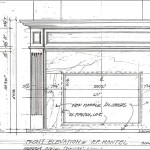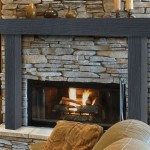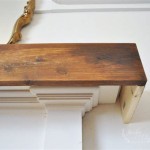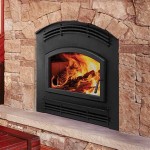Direct Vent Fireplaces: A Comprehensive Overview
Direct vent fireplaces represent a significant advancement in fireplace technology, offering efficiency, safety, and aesthetic appeal. Unlike traditional fireplaces, direct vent systems are sealed units that draw combustion air from outside the home and vent exhaust gases directly outdoors. This closed system offers several distinct advantages, making them a popular choice for homeowners seeking a modern and convenient heating solution.
Understanding the mechanics, benefits, installation requirements, and maintenance aspects of direct vent fireplaces is crucial for making an informed decision regarding their suitability for a particular application. This article provides a detailed examination of these key aspects, offering a comprehensive overview of this heating appliance.
Key Features and Functionality
The fundamental principle behind a direct vent fireplace lies in its sealed combustion chamber. This means that the fireplace does not rely on indoor air for combustion. Instead, a dual-pipe system is used. One pipe draws fresh air from outside the house, supplying the oxygen needed for the fire. The other pipe vents the exhaust gases, including carbon monoxide, smoke, and other byproducts, directly back outside. This process ensures that no combustion byproducts enter the living space, significantly improving indoor air quality and reducing the risk of carbon monoxide poisoning.
Direct vent fireplaces typically utilize either natural gas or propane as their fuel source. The fuel is ignited by an electronic ignition system, often with a pilot light or spark ignition mechanism. Many models offer variable flame height controls, allowing homeowners to adjust the heat output and aesthetic appeal of the fire.
The firebox itself is often constructed of durable materials like steel or cast iron, designed to withstand high temperatures and provide structural integrity. The viewing area is typically enclosed with tempered glass, providing a safe and unobstructed view of the flames. Decorative elements, such as ceramic logs, glass beads, or stones, are often incorporated to enhance the visual appeal and create a realistic fireplace ambiance.
Direct vent systems are highly adaptable to various installation locations. The vent pipes can be run horizontally through an exterior wall or vertically through the roof, offering flexibility in placement. This versatility allows for installation in rooms without existing chimneys, making them a viable option for renovations or new construction projects.
Advantages of Direct Vent Fireplaces
Direct vent fireplaces offer a multitude of advantages over traditional wood-burning fireplaces, contributing to their widespread popularity. These advantages span across safety, efficiency, convenience, and environmental impact.
One of the most significant advantages is improved safety. The sealed combustion chamber eliminates the risk of backdrafting, preventing dangerous exhaust gases from entering the home. The tempered glass front acts as a barrier, preventing accidental contact with the flames and reducing the risk of burns. Furthermore, the elimination of the need for a chimney sweep reduces the risk of chimney fires.
Direct vent fireplaces are also significantly more energy-efficient than traditional fireplaces. Because they draw combustion air from outside, they do not deplete the heated air from inside the house. This prevents significant heat loss and reduces the strain on the home's primary heating system. The sealed combustion chamber also prevents drafts and air leaks, further enhancing energy efficiency. Many models boast high AFUE (Annual Fuel Utilization Efficiency) ratings, indicating their ability to convert fuel into usable heat efficiently.
In terms of convenience, direct vent fireplaces offer a hassle-free experience. There is no need to chop wood, build a fire, or clean up ashes. The push-button ignition and adjustable flame height controls provide instant and customizable warmth. The minimal maintenance requirements, primarily consisting of occasional cleaning of the glass front, further enhance their convenience.
Environmentally, direct vent fireplaces offer a cleaner burning alternative to wood-burning fireplaces. They produce significantly fewer emissions, reducing air pollution and minimizing their environmental impact. The use of natural gas or propane, which are cleaner-burning fuels than wood, further contributes to their environmental friendliness.
Installation Considerations and Requirements
Proper installation is paramount for ensuring the safe and efficient operation of a direct vent fireplace. It is highly recommended that a qualified and licensed professional perform the installation to ensure compliance with local building codes and manufacturer's specifications. Incorrect installation can lead to safety hazards, performance issues, and voided warranties.
The installation process typically involves several key steps. First, the location of the fireplace must be carefully chosen, taking into consideration factors such as proximity to gas lines, venting options, and structural integrity. The framing and support structure for the fireplace must be constructed according to manufacturer's specifications, ensuring adequate clearance from combustible materials.
The venting system is a critical component of the direct vent fireplace. The vent pipes must be properly sized, connected, and sealed to ensure proper exhaust of combustion gases and intake of fresh air. The vent pipes must also be installed with the correct slope and clearances to prevent condensation and ensure proper airflow. The termination point of the vent, whether through the wall or roof, must be located in accordance with local codes and manufacturer's guidelines to prevent re-entry of exhaust gases into the building. Specific rules govern the location relative to windows, doors, and other air intakes.
The gas line connection must be performed by a qualified gas technician, ensuring a leak-free and secure connection. The gas pressure must be properly regulated to ensure optimal performance of the fireplace. Electrical connections, if required for features such as blowers or remote controls, must also be performed by a qualified electrician.
Following installation, the fireplace should be thoroughly inspected and tested to ensure proper operation and safety. This includes checking for gas leaks, verifying proper venting, and ensuring that all controls and safety devices are functioning correctly. The homeowner should also receive detailed instructions on the proper operation and maintenance of the fireplace.
Maintenance and Safety
Direct vent fireplaces, while relatively low-maintenance, require regular attention to ensure continued safe and efficient operation. Proactive maintenance practices can extend the lifespan of the appliance and prevent potential issues.
One of the most common maintenance tasks is cleaning the glass front. Over time, the glass can become clouded with deposits from combustion byproducts. Cleaning the glass regularly with a specialized fireplace glass cleaner will maintain a clear view of the flames. It is crucial to use a cleaner specifically designed for fireplace glass to avoid damaging the surface or leaving behind residue.
Annual inspections by a qualified technician are highly recommended. These inspections can identify potential issues such as gas leaks, vent blockages, or malfunctioning components. The technician can also clean the burner assembly, inspect the venting system, and test the safety devices to ensure proper operation. This proactive approach can prevent costly repairs and ensure the safety of the occupants.
Homeowners should also be aware of potential safety hazards and take precautions to prevent accidents. Never store flammable materials near the fireplace. Keep children and pets away from the hot glass surface. Ensure that the area around the fireplace is clear of obstructions. If you suspect a gas leak, immediately turn off the gas supply and contact a qualified gas technician.
Regularly check the venting system for any signs of blockage or damage. Debris, such as leaves or snow, can accumulate in the vent pipes and restrict airflow. Damaged vent pipes can leak exhaust gases into the home. If you notice any issues with the venting system, contact a qualified technician to inspect and repair the system.
It is also important to understand the operation of the fireplace's safety features, such as the pilot light and safety shut-off valve. Familiarize yourself with the manufacturer's instructions and know how to respond in the event of a malfunction. Regularly test the carbon monoxide detectors in your home to ensure they are functioning properly.
By adhering to these maintenance and safety guidelines, homeowners can enjoy the warmth and ambiance of their direct vent fireplace safely and efficiently for many years to come.

What Is A Direct Vent Fireplace Fireplaces Learning Center

How To Find The Most Efficient Direct Vent Gas Fireplace For Your Next Project
.aspx?strip=all)
Benefits Of Direct Vent Fireplaces Regency Fireplace S

What Is A Direct Vent Fireplace Fireplaces Learning Center

How Direct Vent Fireplaces Work

Direct Vent Vs Natural Www Mygasfireplacerepair Com

Empire Tahoe Premium 32 Clean Face Direct Vent Gas Fireplace

White Mountain Hearth Tahoe Clean Face Direct Vent Fireplace Luxury Fireplaces Usa

Freestanding High Efficiency Direct Vent Gas Fireplaces Inserts Stoves Godby Hearth And Home

30 Ruby Contemporary Intellifire Touch Direct Vent Fireplace Insert Blower And Remote Electronic Ignition Majestic
Related Posts








